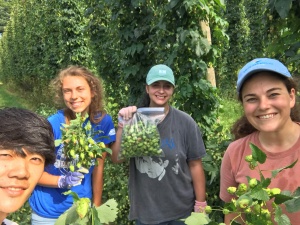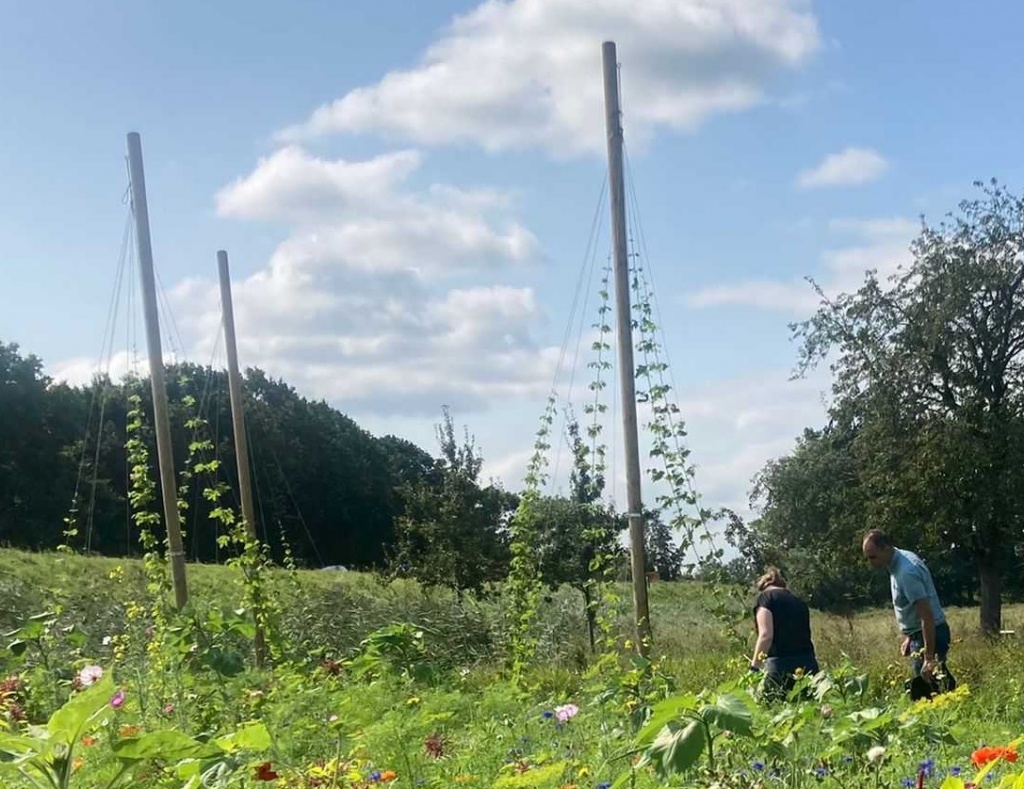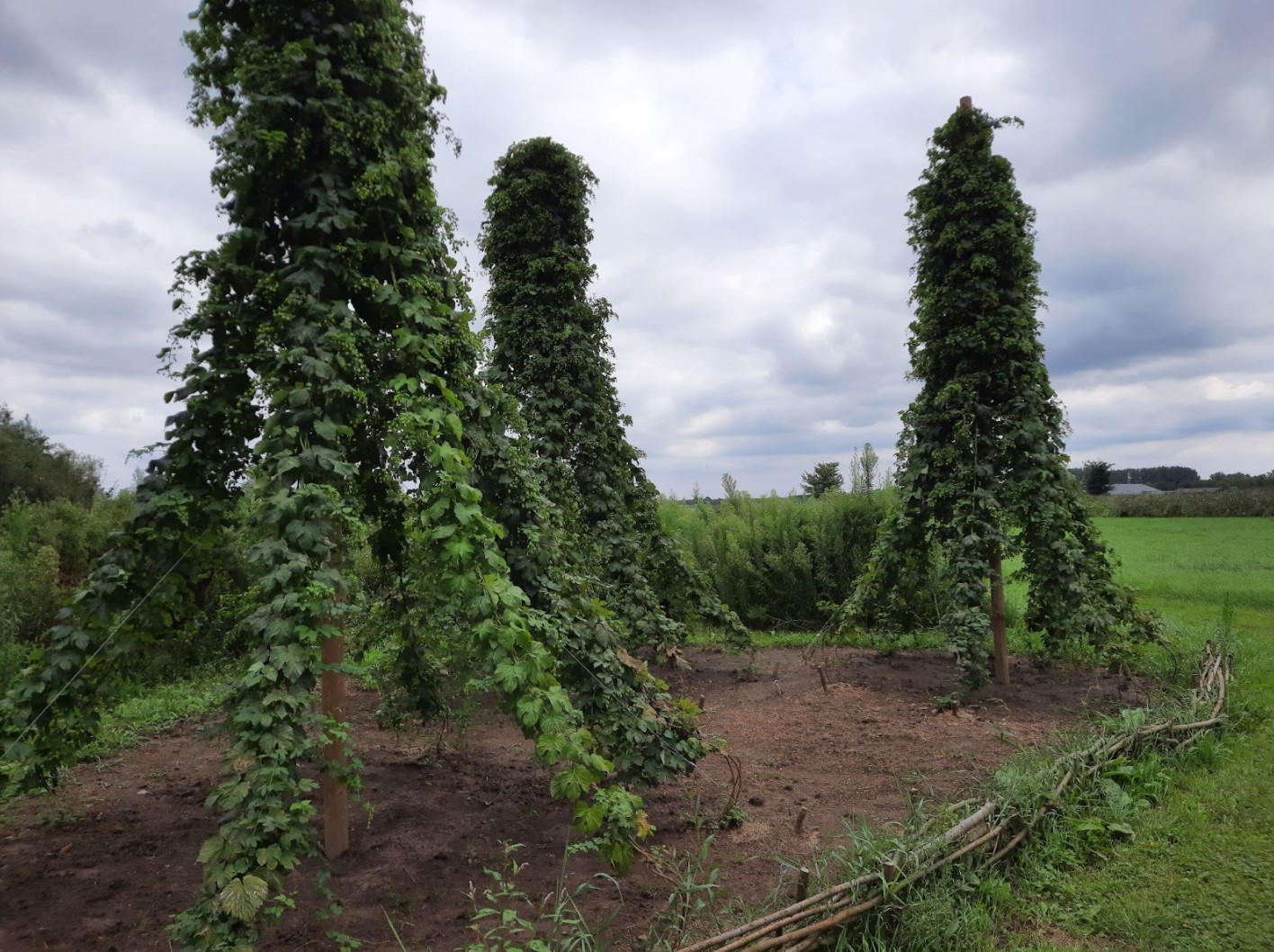Hop (Humulus lupulus and related species) is an important global crop valued for conferring taste and anti-microbial properties to beer. Virus and viroid infections impact hop yield and quality throughout the world, but infections do not always cause clear symptoms and may be overlooked in field surveys. To deepen understanding of hop infections and their global influence, Ph.D. students Kota Nakasato (Malmstrom lab, MSU) and Dieke Boezen (Netherlands Institute of Ecology, NIOO-KNAW) are deep-sequencing viruses and viroids in parallel from hopyards in Michigan and the Netherlands. The sequences they uncover will allow cross-region comparisons and provide insight into the geographic distributions of virus variants and their genetic relationships (phylogenetics) across the Atlantic. The MSU work has been supported by multiple sources, including Project GREEEN and the Michigan Craft Beverage Council (in collaboration with the Quintanilla lab).

Comparison of infections in Michigan and the Netherlands is valuable because both regions have hop-production industries that are re-emerging from historical roots and seeking to optimize disease control. In the US, Michigan is the fourth biggest hop producer after states in the Pacific Northwest, and its history of hop production goes back to the 1800s. Production declined after a European pest aphid was introduced. In the Netherlands, the Dutch were leaders in hop production and brewing during the middle ages, but the industry declined due to competition with German producers. Now the growing popularity of craft beer is driving a resurgence in the hop-growing industry, in both the Netherlands and Michigan.

Managing viruses and viroids in re-emerging hop industries requires a global perspective because hop is a global commodity and hop plants are transported worldwide. The international exchange of hop material has increased flavoring options for beer but also moved pathogens across continents. In the Netherlands and elsewhere in Europe, native hop is represented by the Eurasian variety Humulus lupulus var. lupulus. In Michigan, native hop is represented by two North American varieties, Humulus lupulus var. pubescens and Humulus lupulus var. lupuloides. The European hop was brought to North America half a millennium ago, where it escaped from cultivation and naturalized, so Michigan ‘wild hops’ now are a mix of introduced and native material. In parallel, North American hop varieties traveled back to Europe and beyond. For centuries, breeders around the world have worked with the rich array of available hop material to develop unique hop flavors. This effort has produced a dizzying number of cultivars with complex genetics, including differences in pathogen susceptibility.
Hop viruses and viroids have traveled the world too, as stowaways in hop rhizomes that are used to start new hopyards. Hop-loving insects capable of wide-ranging transmission have also traveled, sometimes sneaking past pest control and carrying pathogens with them. Hop viruses now impact crop yield and quality in the furthest corners of the hop-growing industry. Kota and Dieke will evaluate sequences of hop viruses and viroids to better understand how these pathogens have been exchanged between Europe and North America. Ultimately, the goal is to identify pathogen variants, monitor their distributions, and characterize their impacts on hop. In the future, broader genomic surveillance of plant pathogens will help grower decision-making about pest control in many crops.

In Michigan, diagnostic virus and viroid testing is available to growers through the Michigan State University Plant and Pest Diagnostics lab. Viruses detected in samples will be sequenced to expand the genetic information available for this comparative study. For more information, visit https://www.canr.msu.edu/news/msu-plant-pest-diagnostics-provides-testing-for-hop-viruses-and-viroids.